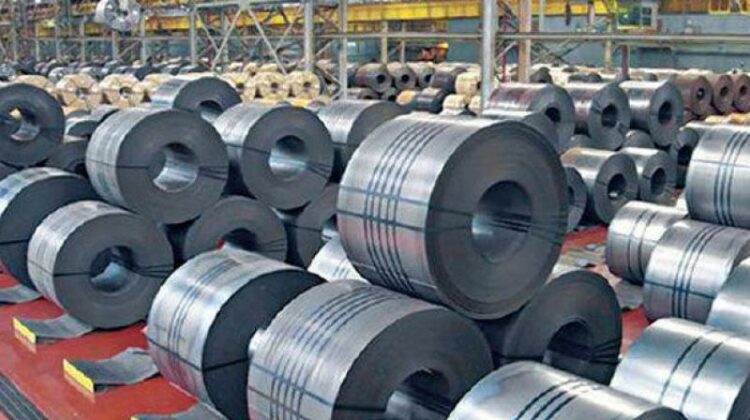
India’s Steel Trade deficit hits ₹1,600 Cr in April-October as export pressure persists
NEW DELHI : The continued fall in export demand saw India report a trade deficit in steel shipments (value of imports exceeding exports) for the second consecutive year.
Trade deficit stood at ₹1,594 crore during the April-October 2023, according to provisional data from the Steel Ministry show. Imports of total finished steel for the period were valued at ₹31,354 crore ($3,798 million) whereas exports were valued at ₹29,760 crore ($3,605 million).
Volume-wise, imports were at 3.48 million tonnes (mt) – up 10 per cent Y-o-Y , a tad lower (0.04 mt) than exports of 3.52 mt, down 12 per cent YoY, for the period under review.
Exports had been hit last fiscal following the imposition of duty, and the trade deficit in 7M FY23 was ₹1,775 crore; while in earlier years, 7M FY22 and 7M FY21, the trade surplus was ₹38,800 crore (approx) and ₹7,670 crore (approx), respectively.
“Global steel price trends remained mixed in October 2023 due to a combination of local and global issues,” the Ministry noted in its review, adding that China steel prices “maintained its downward bias, remaining under pressure from easing production controls and low local consumption amid a weak construction / property sector.” In the USA and Europe, it was mixed bag with fluctuations noted across items.
Exports under pressure
Exports, however, continue to remain under pressure in view of slowing demand from key markets, including parts of Europe and Vietnam, once a major export market, emerging as one of the largest importers for low-priced offerings.
Indian mills have not come up with any major overseas offers for almost two months, since September-end, when the last offers were in the $600 per tonne-odd range. Some shipments to the European Union were made recently in November, though.
Hot rolled coil (HRC) and strips (1.257 mt) was the item most exported, accounting for 36 per cent share in total finished steel in the April–October period. Flat products accounted for 87 per cent share (down by 9.5 per cent) of exports, the rest 13 per cent came from long and other non-flat offerings (down by 20.8 per cent).
Italy (0.701 mt) is the largest export market for India, the Ministry report mentioned, adding that the European markets include Spain (0.3 mt, up 71 per cent) and Belgium (0.3 mt, down 11 per cent). Other major export markets were Nepal (0.34 mt, up 16 per cent) and UAE (0.25 mt, down 46 per cent).
According to consultancy firm SteelMint, some cold rolled coil export deal was recently concluded for Europe at $770 per tonne, with current offer prices in the segment being in $770 -780 per tonne range. European buyers are trying to re-stock ahead of the New Year, and lead times from India (to Europe) are shorter.
In fact, in view of poor demand conditions and continued fall in prices, Indian mills started withdrawing export offers from September-end onwards and started concentrating on the domestic market.
Indian trends
Meanwhile, India managed to buck global trends with steel prices maintaining an upward momentum, primarily due to increasing rates of key input materials and improved domestic consumption.
India was the second-largest producer of crude steel. Finished steel production is at 78 mt, up 14 per cent YoY (against 68.5 mt) for the April – Oct period. Consumption stood at 76 mt, up 15 per cent YoY (against 66 mt).
The Steel Ministry, in its report, has mentioned that the “domestic economic environment remains (s) upbeat”. According to provisional estimates, India registered a GDP growth of 7.8 per cent in the April-June quarter of FY24, a 6 per cent rise in IIP and a 7.8 per cent growth in the Eight Infrastructure Index during the April-September period.
